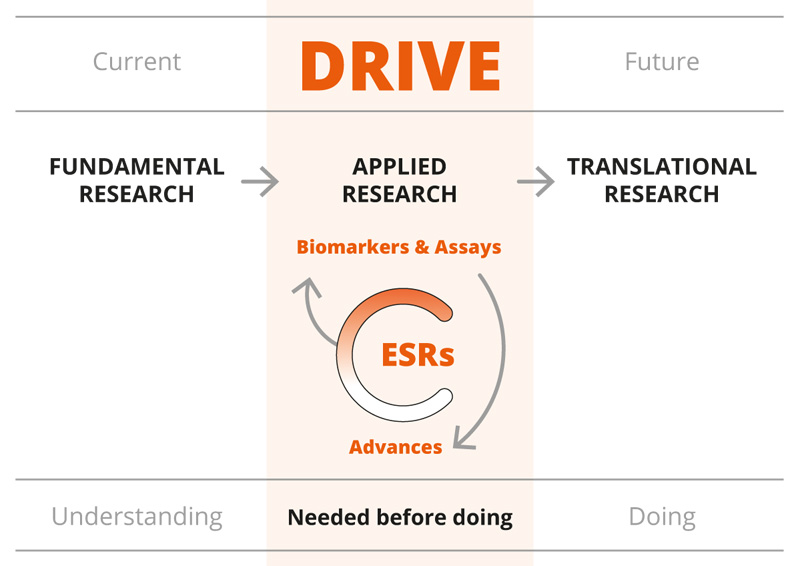Top European researchers joined forces to create a network to train young scientists in applied autophagy research, and equip them with competencies and skills to promote the future translation of discoveries in this field.
About
The manipulation of autophagy has enormous therapeutic potential to revolutionize the way we treat cancers, neurodegenerative disorders, inflammatory and infectious diseases. Knowledge about the mechanism and regulation of autophagy is growing at a breakneck speed; however, translation of this knowledge into clinical-grade products with a benefit for the public healthcare has lagged behind. Translation is currently hampered by the lack of knowledge about the precise contribution of autophagy for different physiological and pathological situations, but also by the lack of models and biomarkers and assays to monitor autophagy in vivo. This gap does not allow to effectively test therapies and drugs and hampers the realization of clinical trials.
DRIVE will fill this gap by training through research 15 early stage scientists on applied autophagy research. Each one of them will realize a cutting-edge project.
Ultimately, DRIVE has the ambition to foster the European-wide growth of applied and translational autophagy research, and accelerate the establishment of clinical-grade solutions for the benefit of millions of patients.
The DRIVE approach
The goal of DRIVE will be reached through the realization of the following 4 main objectives: The goal of DRIVE will be reached through the realization of the following 4 main objectives:

- Completion of 15 research projects addressing the 3 key research challenges (biomarkers, assays and conceptual advances) from different angles to reinforce applied autophagy research, with the aim to promote its translation
- Training a new generation of researchers through individual research projects, sharing all the same main challenges, intra- and intersectoral secondments, local and network-wide training
- Adopting an interdisciplinary and intersectoral approach through the composition of the consortium and the large number of associated partners
- Creating an efficient network of researchers from academia and industry, working closely together towards the success of DRIVE


